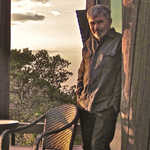

There are many buildings that house museums. There are few buildings that are museums.
November 20th, 2013, 1pm
Many buildings house museums, but few buildings are museums. These few are works of architecture that express history in space and form, not just in text and artefact. Last year, I visited one of these.
Libeskind’s design for the Jewish Museum of Berlin started as a palimpsest in plan; as traces of the ghettos, protests, and districts that once defined Jewish life in Berlin. These marks formed the aesthetic of the building’s fragmented façade as well as the axes that structure its rooms and corridors. Both are interesting. Yet, the resulting surface aesthetic and circulation paths are not what gives the building its power.
Instead, I find this power in my exposure to weather and light in the Tower, where I felt a deep uncertainty. I found it in the skewed canyons and slippery surfaces of the Garden, where I felt a sharp unease. I found it in the sounds of scraping metal that the Void echoed into a feeling of visceral disquiet.
Those spaces, imbued with those symbols, affected me because they presented history in the present — as a lived experience rather than a read record.
Last week, I visited another such Museum: the Musée des Civilisations de l’Europe et de la Méditerranée. The MuCEM spans — by way of two giant cantilevered pathways — across the Esplanade de la Tourette, Fort Saint-Jean, and the J4 building.
The J4’s interwoven screen and structure are noteworthy, but it is the Fort that fascinated me. While it does contain exhibition spaces, the more interesting display is the five centuries worth of buildings, landscapes, and infrastructures scattered across the site. Lacking a consistent ground plane or directed circulation paths, the Fort encourages me to take a meandering path through it’s diverse spaces and styles. This is a stroll in which history is observed not as a linear sequence but as a constant and unregulated mix. The new meets the old meets the older meets the new.
Two elements of the new stand out in particular. The first is the use of corten steel in the buildings and the landscaping. This material is now something of a cliché, yet here its rusted patina blends with the worn brick and stone perfectly. Rather than seek a contrast through the sharp shocks of steel and glass, the contemporary additions instead employed a more subtle, sympathetic, and successful palette.
The second element that stands out is how the new landscaping integrates into the site. The Fort itself shifts between cramped village-like streets, small plaza spaces, and the massive lengths of the parapets. Where the contemporary landscaping interfaces with these spaces it does so with tact. It fades in from the edges, tapering its tiling patterns and phasing in its fixtures. Such a gradiented aesthetic is another common trope in contemporary landscape architecture, but it works so well here because it deliberately continues a pre-existing condition whereby the built environment of the Fort has always advanced by addition. Era-by-era, layer-by-layer, the Fort has inadvertently evolved as a spatial record of its past programmes. It’s recent repurposing succeeds because it never erases this history. Instead, it merely highlights this timeline by extending it into the present.
Whereas Libeskind’s palimpsest is found in his design process, the Fort’s palimpsest is far more literal. But the subject of each museum is intertwined with its spaces.
Other moments in Marseille
-
This is a test
in Marseille, France -
This morning on my way to the office.
in Marseille, France -
A moment of architectural deja vu. Surely the rings that shroud my office are not a reference to Corbusier's?
in Marseille, France -
Architecture
The Marseille Cathedral was of little interest. I have little time for anything built before the 20th century.
in Marseille, France -
Architecture
Having a Le Corbusier weekend in Marseille.
in Marseille, France -
Old school Marseille is pretty nice, too. So many ways a place can make you say, wow.
in Marseille, France -
Finally made it to Marseille. Suitably impressed by all the new buildings in the European Capital of Culture 2013.
in Marseille, France -
Blah blah
in Marseille, France -
The post office was closed for lunch, so we're getting coffee at Green Bear.
in Marseille, France


